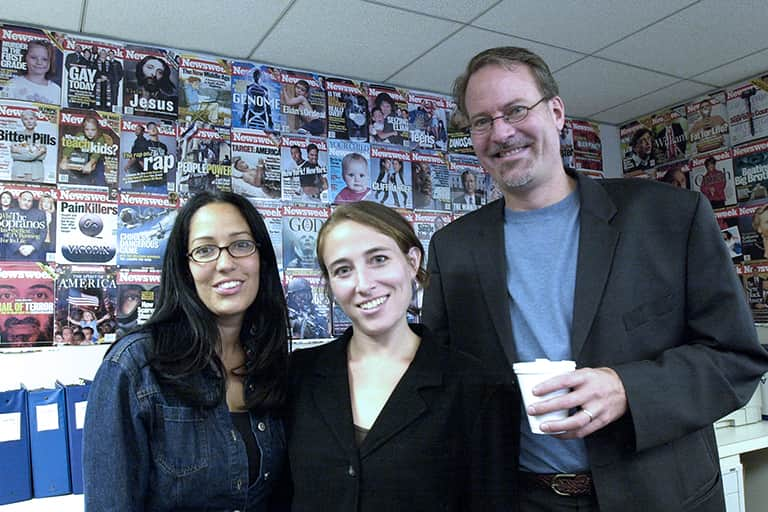Although descended from a long line of engineers and an ambassador, Karl Gude drew his greatest influence from a 19th century Norwegian artist.
"Hans Gude was my great great grandfather," says Gude. "He was a famous landscape painter during the Romantic period. Me, I became a cartoonist and illustrator. Close enough."
While creating art is among Gude's talents, the newly appointed director of the MSU Media Sandbox in the College of Communication Arts and Sciences is considered a master of visual storytelling in journalism. In 2006, Gude joined the MSU faculty to spearhead the first information graphics program through the School of Journalism. Since then, he has led study abroad programs in Spain and has taught courses in creative thinking and problem solving, a topic he is passionate about and guiding principle of the Media Sandbox: an integrated media arts program of cinematic arts, game development, graphic design, web design, visual storytelling, 3D art and animation.
Before coming to MSU, Gude served as Director of Information Graphics at Newsweek magazine, the Associated Press and the National Sports Daily.
Gude and his staffs covered major news events, including seven presidential elections, wars, sporting events, natural disasters, science, medical and technical advancements and the attack on the World Trade Center.
"This emotional story was unfolding down the street in our hometown," Gude says. "At Newsweek, we worked on the graphics through our shock and grief."
Gude has consulted with corporations, PR and news organizations, academic and scientific institutions and government agencies to create infographics. He also writes and draws a column for the Huffington Post, has given TEDx talks in Detroit and Lansing, and has spoken twice at the South by Southwest (SXSW) technology conference. His drawings and cartoons have been widely published, including in the New York Times. He also has more than 5.3 millions views to his YouTube page where he demonstrates ways to use visualization software and more.
"I always thought I would be hired as an artist somewhere," Gude says. "I feel really lucky to have stumbled on a career in journalism, and to come in early in the growing field of infographics."
Pathway to the sandbox
Gude traces his path to journalism and into the Media Sandbox back to his early teens—the days when his father sent him to his room for causing trouble. Once there, he would pick up a pencil and paper and draw, triggering a calming effect he says gave him a sense direction for what he wanted to do in life.
After high school, Gude moved to South America to live with his maternal grandparents and teach English. When he turned 20, he came back to the U.S. and took an art course at a community college. He wound up doing carpentry, working in hardware stores and eventually moving to Vermont to work on a dairy farm. All the while, he kept drawing. After tending to cows and delivering calves for two years, he sold his truck and moved to New York City. It was 1979, he was 23, and he had $5,000 to try and make it as an artist and illustrator for comics and children's books.
"What else does a young man want to do other than that?" he laughs. "I told myself if my money ran out, I would move back to the farm. But I was driven by desperation and hunger and the fact that I had decided New York City was the coolest place on the planet."
Gude succeeded. He worked as a messenger delivering packages to make extra money, and colored in comic book covers for a publishing house. While there, a colleague told him about a journalism job. She gave him a slip of paper with a phone number and told him to call.
"I called, got an interview, and eventually this place called United Press International called me back," he says. "They hired me to help explain the news of the day by visualizing and drawing things—what they now call infographics."
Guide realizes his career is part happenstance and part ambition fueled by the drive to overcome the objections of those who devalued creative professions, like his father and some teachers. That realization, he says, is among the lessons he wants to convey to students, particularly those pursuing creative and innovative paths through MSU's Media Sandbox.
"It's important for students to know that all their skills and intelligences are valued," Gude says. "I don't want students to lose their uniqueness, to have it squeezed out of them. I want to do everything to help them find their individual voices, to understand what they are good at, and to forget those negative messages they may have received."
Gude lives in East Lansing with his wife, Dorsey Gude, who he met while working at the Associated Press and who works in development at MSU. His two 20-something sons have explored both science and the arts, with the older pursing environmental sustainability and the younger classical guitar and writing.
